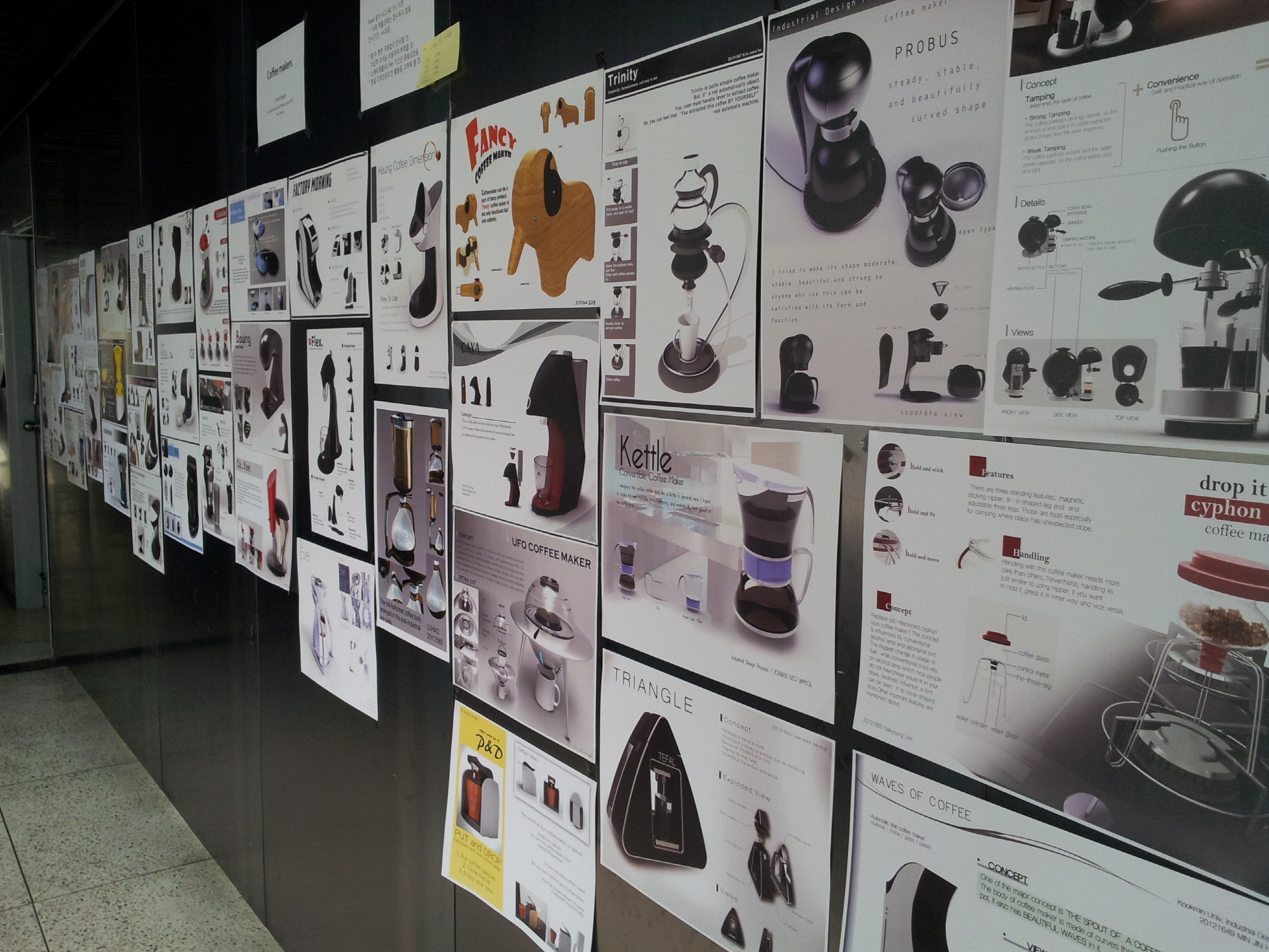My friend teaches Product Design. He uses coffee maker in his course. Students disassemble and assemble a coffee maker and then design a new one.
A few days ago, I was invited to see the designs that his students submitted to his course. After discussing with him which ones are well designed and why, I made two interesting observations.
First, only few coffee maker designs have cords. He and I reached a consensus that most students failed to take into account how their newly designed coffee makers work or look like in reality. Only few thought these issues deeply and put some flavor of reality. Interestingly, we reached another consensus that the coffee makers with the cords are generally better designed than those without cords.
Next, we chose the identical coffee maker as well designed for different reasons. I chose it because its look and feel is appealing whereas he chose it because it may work well compared to others. Although I always assume that aesthetics and usefulness are in a trade-off situation, they are not necessarily traded off in the reality.




Aesthetics conflicts with usability in a given condition. Good design solves the conflict by overcoming the given condition with new way of thinking or with new technology. 🙂
Excellent point. Much of my work is understanding how people make a decision or helping them to make a better decision “when a condition is given.” Going beyond a given condition is out of my scope for now. Then, I wonder how people overcome the given condition. In other words, I want to know what is exactly new way of thinking or new technology. 🙂